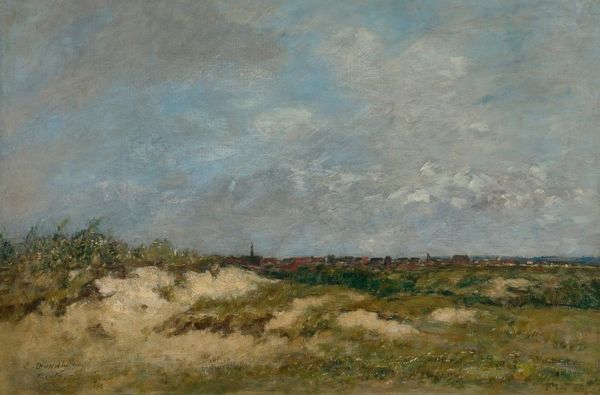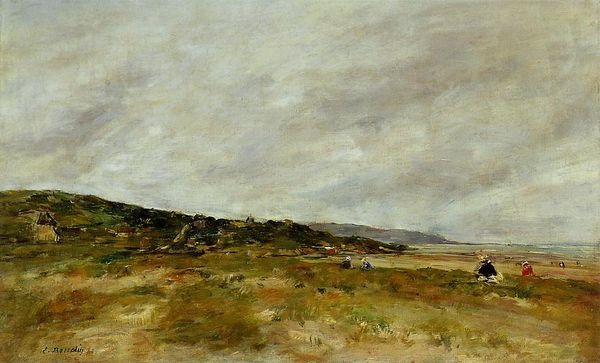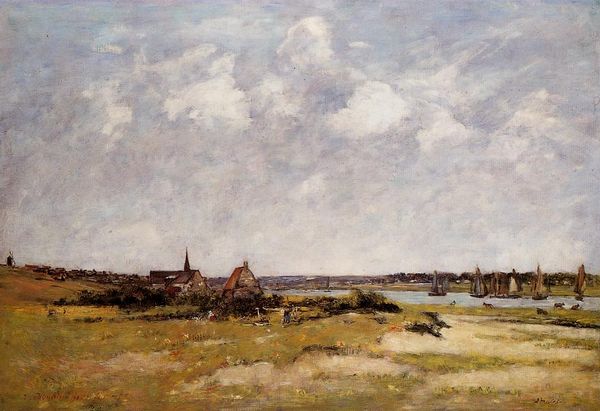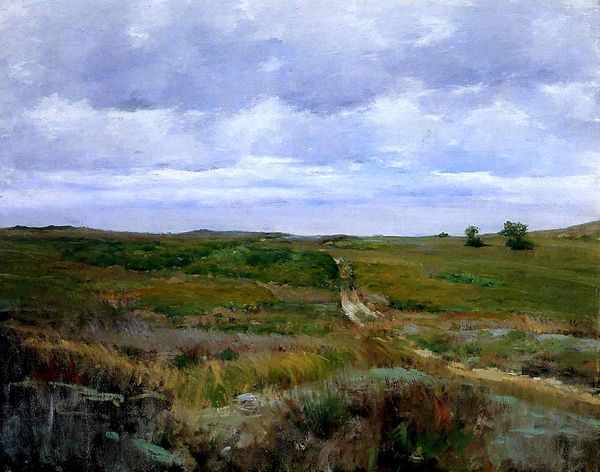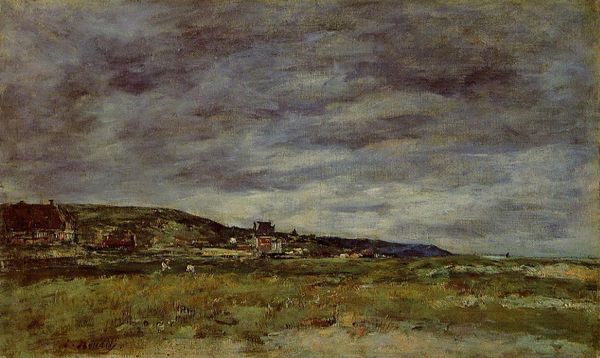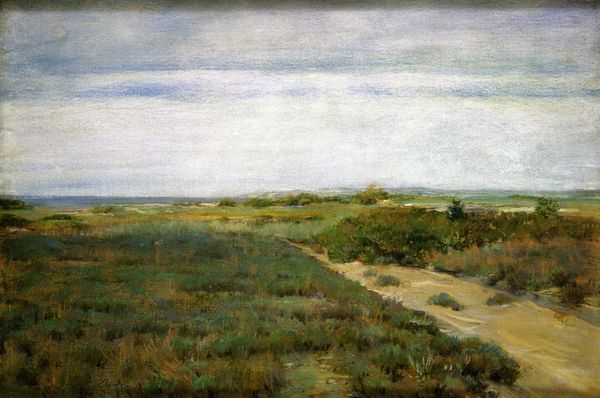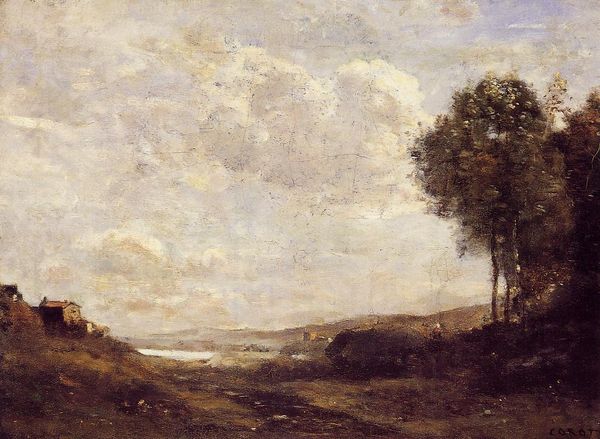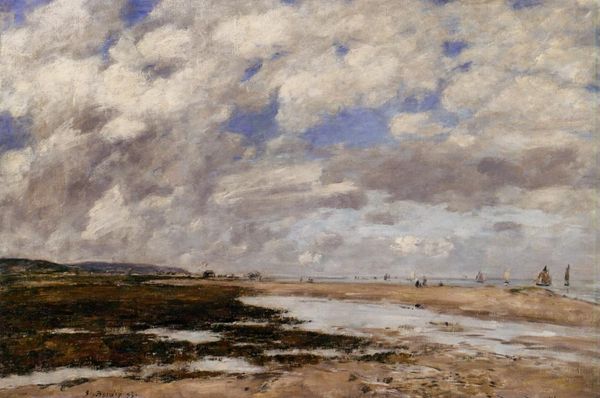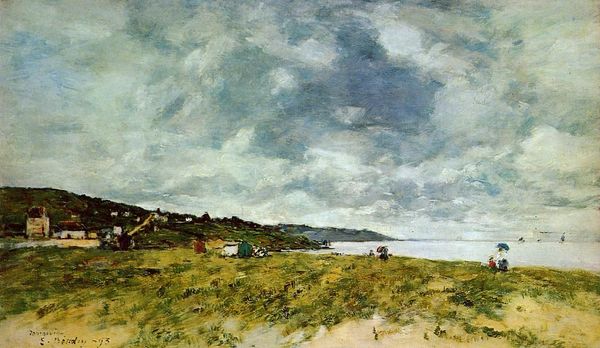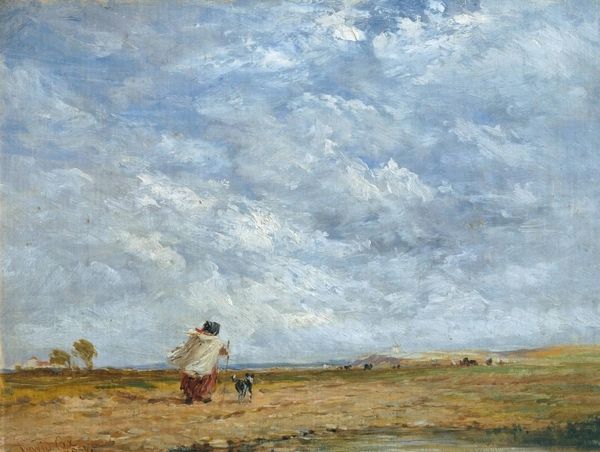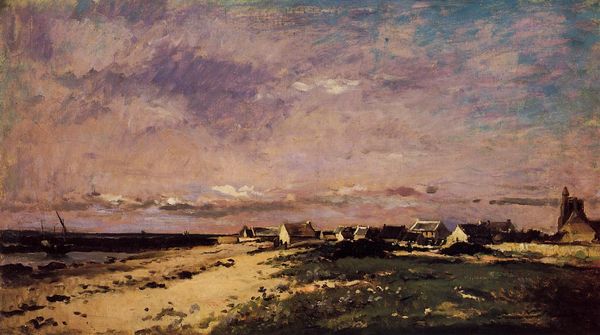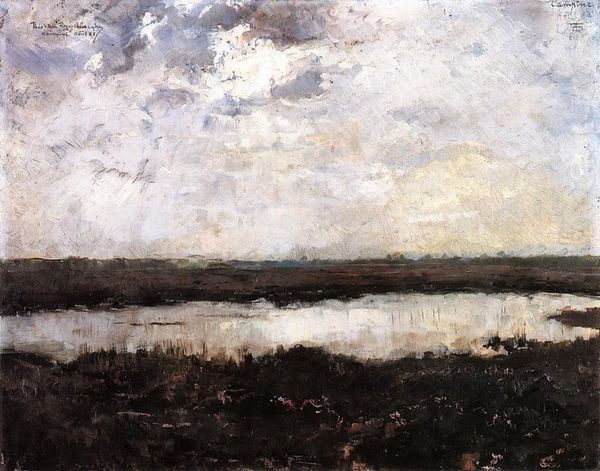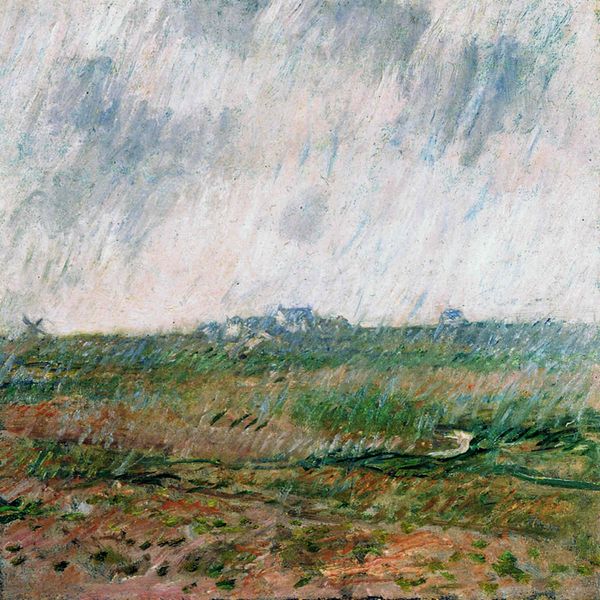
painting, plein-air, oil-paint
#
tree
#
sky
#
painting
#
impressionism
#
grass
#
plein-air
#
oil-paint
#
landscape
#
oil painting
#
cloud
#
seascape
#
natural-landscape
#
cityscape
Copyright: Public domain
Curator: I'm immediately struck by the contrast. It feels somber, even foreboding, with that heavy sky looming over the muted landscape. There’s a stillness that almost feels... weighted. Editor: Indeed. This is Eugène Boudin’s *The Berck Dunes*, painted in 1886. Boudin, a precursor to the Impressionists, dedicated himself to capturing the transient effects of light and atmosphere, working primarily en plein air. He was known for his skies, which he believed held the key to a painting’s success. Curator: You can certainly feel that dedication here. That sky, it’s practically a character in itself, pregnant with some unvoiced drama. Look at the way he's rendered the cloud formations, almost like brushstrokes of fate. Is there any symbolism? Editor: The overcast sky, rendered in cool grays and blues, can be interpreted as representing the challenges and uncertainties of life. Boudin painted scenes from everyday life but did so during a period of intense industrialization and social upheaval. This location also faced specific socio-economic realities connected to maritime industries, constantly threatened by the temperamental environment. The landscape’s openness could then suggest themes of resilience. Curator: So, the people intimately connected to this landscape were tied to the temperamental skies and conditions for their very livelihoods. Yet, in the midst of these elemental forces, the presence of the town hints at community, perhaps an enduring sense of hope. There is a strength in these structures. Editor: Exactly. Even the way the painting is executed reinforces this interpretation. The brushstrokes are loose and expressive, mirroring the spontaneity and energy of nature. But that city at the painting's horizon is placed with a different technique, where the artist takes extra care. Curator: That combination… the freedom in the dunes versus the constraints suggested by the clouds and social demands of that time. Editor: There is also gender to consider: it's important to view this through an intersectional lens; Boudin worked at a time when women artists faced considerable barriers to painting outdoors and painting landscape. This lens reminds us of women like Rosa Bonheur, Anna Bilinska-Bohdanowicz, and many others. Curator: Knowing about these intersectional components opens even more interpretative lenses! Editor: These added perspectives deepen my understanding and experience of the work. There are so many layers of meaning to uncover.
Comments
No comments
Be the first to comment and join the conversation on the ultimate creative platform.
